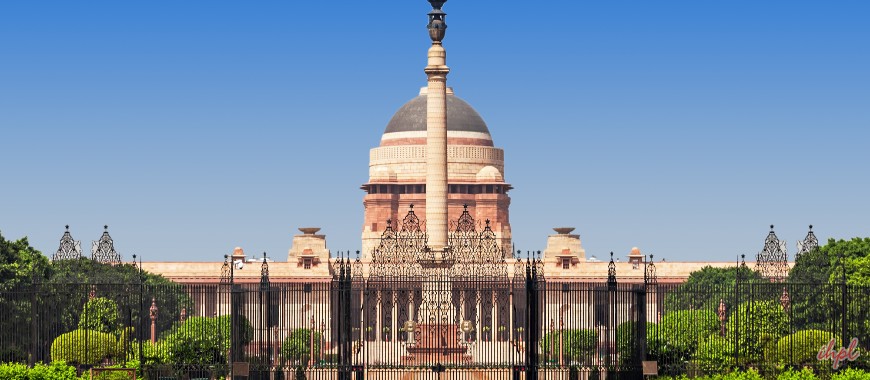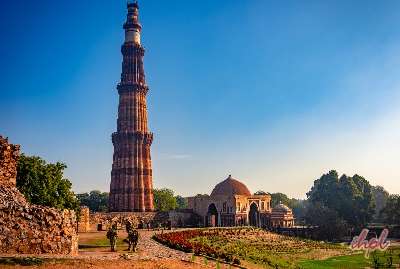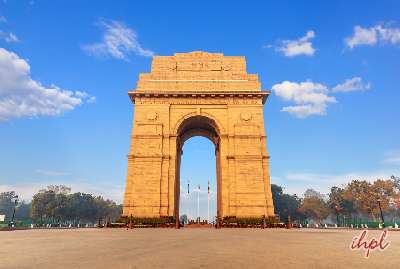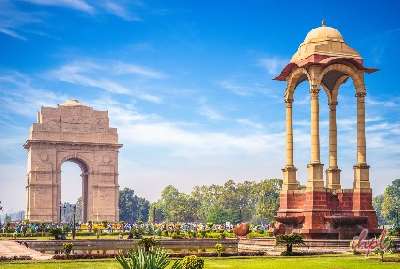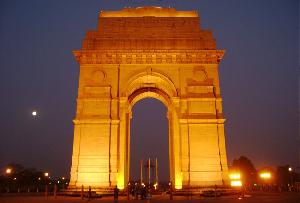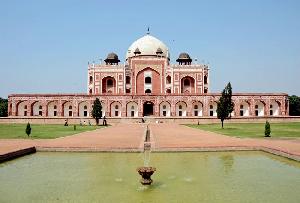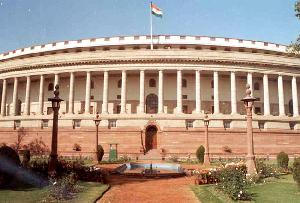Apart from being the capital of India, Delhi is a fascinating city with pleasant contradictions. Comprising of Old Delhi and New Delhi, the city is home to famous tourist destinations like the Laxmi Narayan Temple, India Gate, Jama Masjid, Red Fort, Qutub Minar, Humayun’s Tomb, and the vivacious shopping bazaar of Chandni Chowk. One such tourist attraction in Delhi is the Rashtrapati Bhavan, the official residence of the President of India.
Background
The Palace of Rashtrapati Bhavan is located in New Delhi. Until 1950 it was known as Viceroy’s House and served as the residence of the Governor-General of India. On 12th December 1911, during the Delhi Durbar year it was announced by King George that the capital of India would be shifted from Calcutta to Delhi. As the plan for New Delhi took shape, the Governor-General’s residence was given an enormous scale and prominent position. The British architect Edwin Landseer Lutyens, a key member of the city-planning process, was handed the prime architectural responsibility to design the building. The palace, comprising of more than 350 Rooms, was constructed to affirm the permanence of British rule in India.
After Indian independence in 1947, the now ceremonial governor-general continued to live there, being succeeded by the Indian President in 1950 when India became a republic and the house was renamed Rashtrapati Bhavan.
Description
The elaborate dome-like structure on top of the Rashtrapati Bhavan is known as Chuttri. Various Indian designs were added to the building including several circular stone basins on the top of the palace. There was also a traditional Indian chujja or chhajja, which took the place of a frieze in classical architecture. There were also statues of elephants and fountain sculptures of cobras in the gardens, as well as grilles made from red sandstone called jaalis.
The front of the palace, on the east side, has twelve unevenly spaced columns with the Delhi order capitals. These capitals have a fusion of acanthus leaves with the four pendant Indian bells that are part of the Hindu and Buddhist religions. In the North Block, there are separate wings for the Viceroy, and another wing for guests. At the centre of the main part of the palace is Durbar’s Hall underneath the main dome.
Entrance
Visitors require special permission from Government of India Tourist Office to enter Rastrapathi Bhavan. The Mughal garden, displaying numerous types of roses, remains open to the public only in the month of February when the flowers gloriously bloom.
How to reach
The nearest airport is the Indira Gandhi International Airport located 23 km southwest of Central Delhi and the domestic terminal at Palam is 5 km away from the international terminal. Taxi and coach transfer is available from both International and Domestic Arrivals.
Architecture of Rashtrapati Bhavan:
Perhaps the most dominant symbol of the largest democracy in the world as well as a poignant statement of her sovereignty, the Rashtrapati Bhavan is perhaps the greatest pride of India. Thus, it is hardly surprisingly that the architecture of the Rashtrapati Bhavan too is one that enhances the rich history of Indian artistic and architectural endeavors.
Designed by Edwin Landseer Lutyens, the Rashtrapati Bhavan was originally built as the residence of the British viceroy of India after the capital of the then British ruled India was transferred from Calcutta to Delhi. Besides Lutyens, the construction was designed by a number of other architects including Chief Engineer Hugh Keeling there were many Indian contractors.
Comprising of four floors and 340 rooms, the Rashtrapati Bhavan is constructed over an area of 200,000 square feet incurring a cost of construction that along with that of the Mughal Gardens reached up to 14 million rupees. The most prominent feature of the architecture of the Rashtrapati Bhavan is the dome that forms one of the most prestigious sights of the capital city of New Delhi. A blend of the architectural patterns of Rome as well as the Sanchi Stupa of India, the Rashtrapati Bhavan is a harmonious representation of a number of different architectural styles of both Europe as well as India.
Fast – Facts:
Location
The Rashtrapati Bhavan built on the Raisina Hill is located on the western end of the Rajpath just about a mile away from Connaught Place.
Built by
Built as the official residence of the Viceroy of India after the capital of British ruled India was changed from Calcutta to Delhi, the Rashtrapati Bhavan was designed by Sir Edwin Lutyens.
Admission charges
Though there are no admission fees at the Rashtrapati Bhavan yet it is important that prior permission is taken before visiting the site. Prior permission is also required for photography at the site.
How To Reach:
Located in the heart of the city of Delhi, reaching Rashtrapati Bhavan can be easily accomplished as it is well-connected by:
Nearest airport – Indira Gandhi International Airport
Nearest railway station – New Delhi Railway Station
Nearest metro station – Central Secretariat
Must-see:
An important added attraction of the Rashtrapati Bhavan is the “change of guards” ceremony that takes place on the premises of the Rashtrapati Bhavan every Saturday.
Checkout: Delhi Tour Packages

